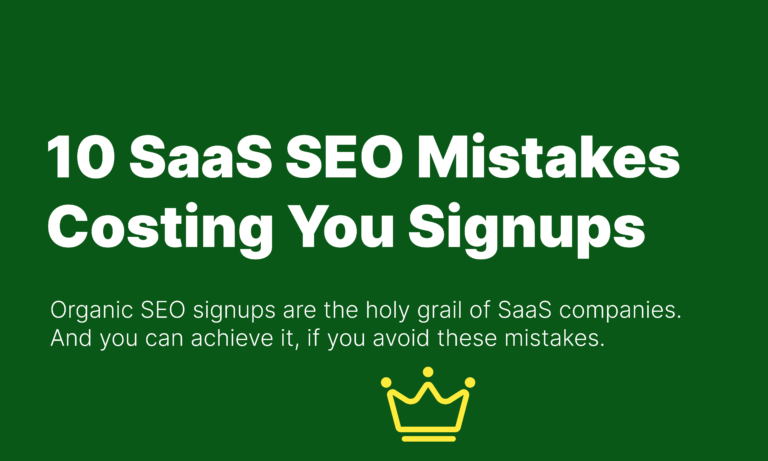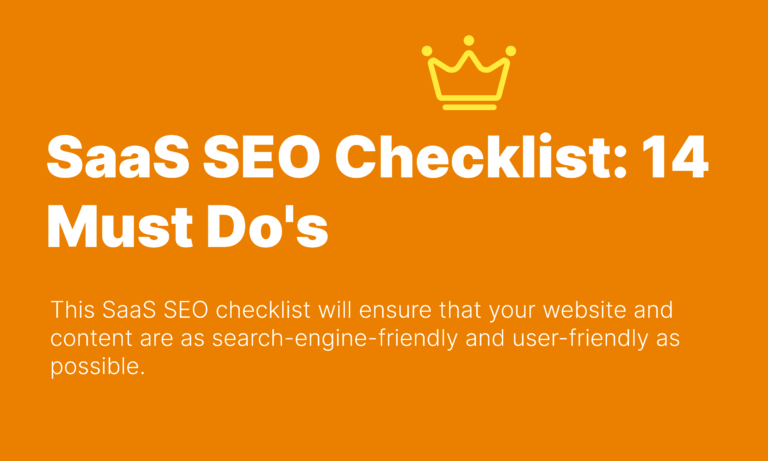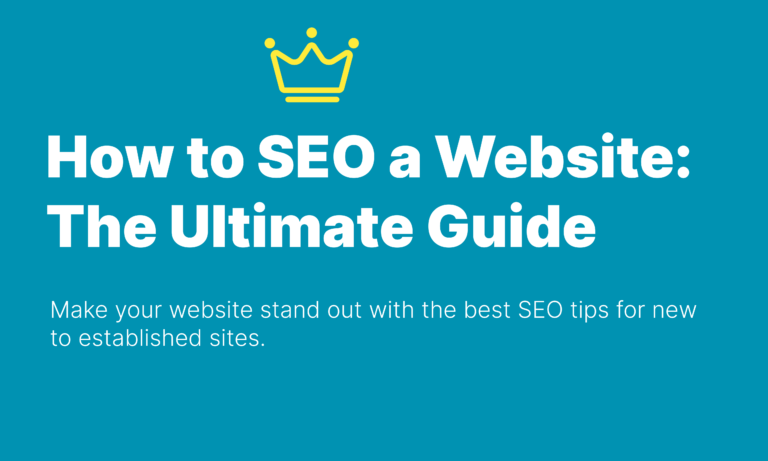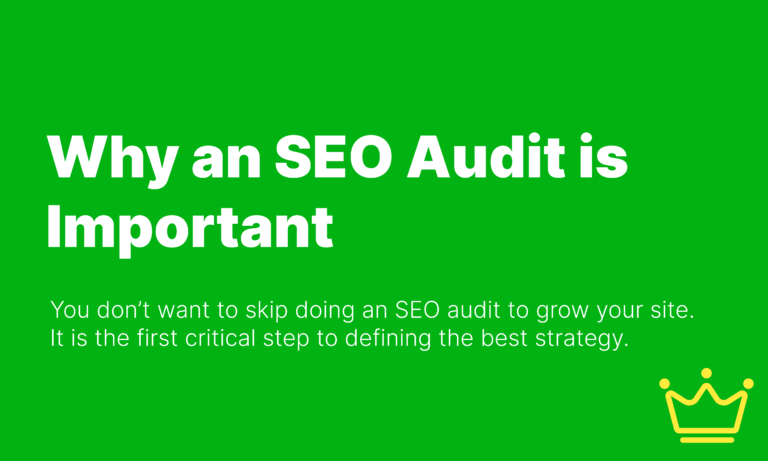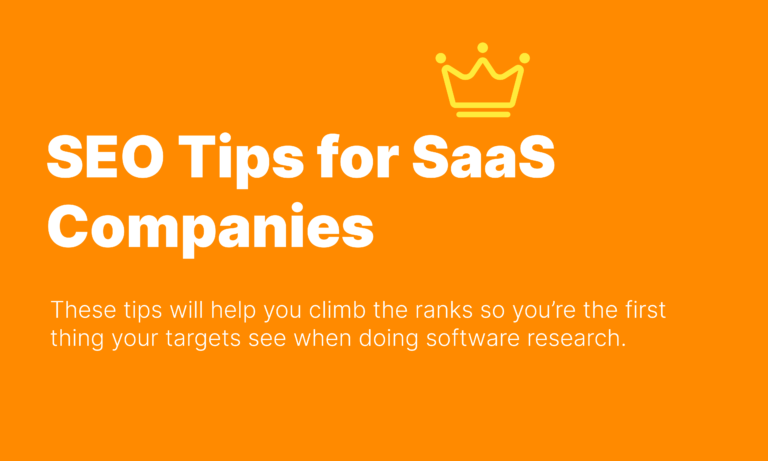How to SEO for Free: Free Tools & Tips
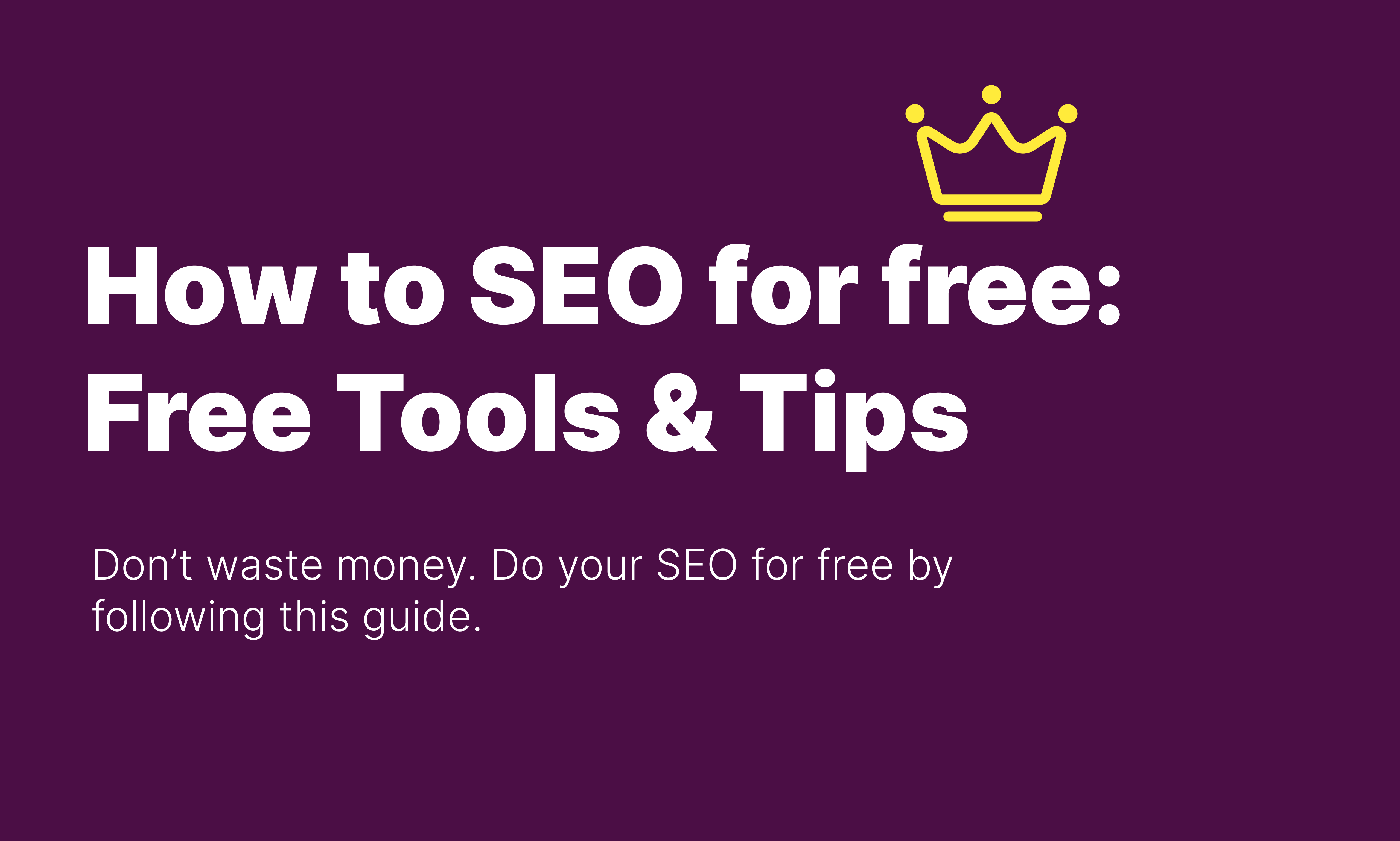
Don’t waste money, do your SEO for free by following this guide.
Many entrepreneurs and small businesses put off optimizing their websites for search engines because they simply don’t have the budget to implement a good strategy. But this is a misunderstanding. Sure, there are great paid tools that can help you, but you could do just as great a job without them.
First, we’ll talk about the elements in your site that you should optimize yourself for free and tips. Then, we’ll show you a few free SEO tools you can use to do all those optimizations.
On-Site SEO for Free
On-site SEO refers to all the elements in your content that you can directly modify. For example, the keywords you target, meta titles and descriptions, URLs, and the content itself.
Creating Valuable Content
Obviously, the content that you publish is the first thing that you should be looking at. Ask yourself, is this content truly valuable for and answering the main question of the reader? Or is it just text generated to get search rankings? There is a big difference. Most people come into SEO and expect that merely having a large volume of text published on their website is enough to get first-page rankings. But just because you have an article about something, it doesn’t mean that Google will make it the first result eventually. The overall quality of your content and website is decisive.
Through regular publishing, you not only keep your website fresh and dynamic but also provide valuable insights. Answering common customer queries through well-researched articles establishes your expertise, building trust with your readers. Engage your audience with captivating narratives, making your content relatable and memorable.
Utilize Keywords
Keywords are one of those aspects of SEO that get over-emphasized. And it is definitely a big part of any SEO strategy. The problem is that most people over-simplify their strategy and don’t utilize keywords correctly. For example, someone who is not successful will select the relevant keyword with the most volume, which is generally a short and very general one, and they stuff it everywhere they can. As if Google will see that the keyword is mentioned so many times that it needs to put it on the first page.
What you actually need to do is look at all the keywords that people are looking for related to your content, even if some barely have any traffic, and add them to the content organically. And they don’t have to be written exactly the same. Google looks at all your content, understands what it is about, and with all of that information, it will decide how relevant is for user queries. Keywords are literally what people look for in Google, so including relevant ones that give context will let Google know that your article is relevant for those users specifically.
Use tools like The Hoth and Ubersuggest to identify the best keywords and try implementing them on URLs, titles, metadata, headings, etc. But don’t stuff. Just think about the purpose of each element and make it the best you can while giving context to your keywords.
Optimize Meta Titles and Meta Descriptions
Meta titles and meta descriptions are the text that appears in Google linked to your content. Ranking is just half the battle. Once you appear on search queries, you need to convince people to actually click on it. For that, your title needs to communicate exactly what the content is about while standing out. If you just copy the titles of others, then you won’t stand out. That’s why these elements should also include the keywords you research. The more specific the better. You can use a free SERP snippet preview to see how your titles and descriptions would look.
Opt for Static URLs
In the labyrinth of URLs, simplicity is your guiding light. Static URLs, those that don’t change and are clear and readable, are highly favored by both users and search engines. Utilize hyphens to separate words, ensuring readability. Incorporate relevant keywords where appropriate, enhancing the URL’s SEO value. A well-crafted URL gives readers a clear idea of the page’s content before they even click. It not only enhances user experience but also signals to search engines that your content is precise and relevant. Predictability and simplicity in your URL structure are fundamental. When readers can predict the content of a page just by reading the URL, you’ve achieved the perfect balance. Such URLs are not only user-friendly but also SEO-friendly, enhancing both user experience and search engine visibility, thus driving more organic traffic to your website.
Off-Site SEO for Free
Off-site SEO, as the name implies, includes elements outside your website that you can influence and have an effect on your rankings. For example, links from other sites to yours increase your authority in the eyes of Google.
Utilize the Power of Social Media to Grow
SEO is more connected to other channels than many people think. If Google sees a lot of people are interested in visiting your site, then it will make your content rank higher.
So, despite that social media doesn’t give you backlink juice, it stands as a potent force in your SEO arsenal. Utilize these platforms not for just sharing content but for creating a buzz around your brand. Share your website’s pages and articles strategically across various social media platforms. By doing so, you don’t just drive immediate traffic but also lay the groundwork for potential resharing. Social shares can lead to increased visibility, making your content more likely to be discovered and linked to. Dive deep into the analytics of social platforms. Understand what kind of content resonates with your audience and tweak your strategies accordingly. By analyzing your competitors’ social media tactics, you gain invaluable insights into what works in your niche. Implementing effective growth marketing techniques, such as contests, giveaways, and interactive campaigns, can significantly enhance your social media presence, indirectly boosting your website’s SEO through increased engagement and traffic.
Guest Posting
Collaborating with authoritative blogs and publications within your niche is a two-fold strategy. Not only does it enhance your brand’s visibility among relevant audiences, but it also secures high-quality backlinks, a critical element of SEO. Crafting content that is not just relevant but engaging is key. The content you provide should not only reflect your expertise but also compel readers to click through to your site. Include strategic links within your guest posts, directing readers to your website. By doing so, you drive traffic from a platform that already trusts the host blog. Moreover, these backlinks from respected sources enhance your website’s authority in the eyes of search engines, making your site more likely to rank higher in search results.
Securing Easy Links
Sometimes, you can identify instances where your brand is mentioned but lacks a hyperlink. Politely reach out to the site owners or administrators, requesting the addition of these backlinks. Every unlinked mention represents an opportunity to strengthen your backlink profile, thus boosting your SEO efforts. Furthermore, platforms like Help A Reporter Out (HARO) open doors to valuable backlink opportunities. By providing expert opinions to journalists and bloggers, you not only position yourself as a thought leader but also earn authoritative backlinks when your insights are cited. Every link earned in this manner is a testament to your expertise and boosts your SEO endeavors significantly.
Building Brand Recognition
Similar to the social media point, building your brand outside SEO is actually imperative for your SEO success. Your brand is not just your logo; it’s the entire experience and expertise you offer. Share informative content related to your industry expertise, both online and offline. The more valuable content you produce, the more credibility you gain. Encourage company executives to share their insights and expertise through various avenues such as industry events, webinars, and guest posts. When these respected voices echo your brand’s expertise, it establishes your authority in the industry. Establishing your brand as a credible source not only enhances customer trust but also garners respect from search engines. They recognize and reward brands that are not just visible but also respected and trusted in their respective domains. By building your brand’s reputation, you strengthen your SEO efforts indirectly, making your website more appealing to both users and search engines alike.
Technical SEO for Free
You can also make technical changes to your website. These are things that help Google crawl your content and identify what is it about. Most of these changes are easy to do by yourself with a simple plugin or modification. Learning SEO for technical optimizations is still important since a bad website could be impeding Google from crawling it correctly without you even realizing it.
Simplifying Site Structure
A simplified site structure is the cornerstone of a user-friendly and search-engine-optimized website. Think of your website as a well-organized library where every book (or page) is meticulously categorized for easy access. When users and search engine crawlers encounter a clear hierarchy, they can navigate effortlessly. Create logical main categories that represent the broad topics your website covers. Under each main category, establish subcategories that delve deeper into specific themes. This organization ensures that your content is neatly segmented, making it easy for users to find what they are looking for and for search engines to understand your content’s context.
Reclaiming Broken Backlinks
Identifying and rectifying broken backlinks is akin to mending the pathways that lead users to your site. When a backlink leads to a non-existent or erroneous page, it not only tarnishes the user experience but also results in lost link juice, which is essentially the SEO value passed from one site to another through hyperlinks. Tools like Ahrefs and Moz are your vigilant guards in this aspect. They help you spot these broken links and enable you to redirect them to relevant, existing pages on your website. By doing so, you preserve the SEO value these links carry and maintain user engagement, ensuring that every pathway to your site leads to valuable content.
URL Canonicalization
Duplicate content can confuse search engines, leading them to index the wrong pages and diluting your SEO efforts. Proper URL canonicalization acts as a guiding beacon in this labyrinth. Implementing canonical tags, you tell search engines which version of a page is the master copy, avoiding confusion from multiple variations. If you have multiple URLs pointing to similar or identical content, set up 301 redirects. These permanent redirects not only lead users and search engines to the correct page but also consolidate the SEO strength of the duplicate pages, improving the overall authority of the designated page. By ensuring that every piece of content has a canonical URL, you maintain clarity and focus in the eyes of search engines, safeguarding your website against the pitfalls of duplicate content.
Leveraging the Robots.txt File
Think of the robots.txt file as the gatekeeper of your website. It instructs search engine crawlers on which pages to explore and which to avoid. By guiding crawlers to essential pages, you ensure that your most valuable content is the first to be discovered and indexed. Moreover, the robots.txt file helps in excluding non-public or duplicate content from search engine scrutiny. Regularly updating and optimizing this file is akin to fine-tuning the GPS for your website. It ensures that search engine crawlers efficiently navigate your site, discovering and indexing the most relevant and valuable content. The robots.txt file, when used strategically, optimizes your crawl budget, ensuring search engines focus on what truly matters, enhancing your website’s overall visibility and authority.
How to SEO for Free: Tools You Need
In addition to the aforementioned strategies, several free SEO tools can significantly aid your optimization journey:
The Hoth Free SEO Tools: This free tool is a hidden gem that allows you to do keyword research for free with Semrush’s data. Semrush is another great SEO tool but it can be a little expensive to many. The Hoth gives you access to this data but for free.
Google PageSpeed Insights: In recent years, user experience has taken a center stage in Google’s algorithm, so it’s very important that your site runs smoothly on desktop and mobile. Google PageSpeed Insights is a free tool that allows you to evaluate your site’s speed and usability, identifying areas for improvement.
Ahrefs Free SEO Tools: Perform technical audits, analyze backlinks, and monitor keyword rankings. Ahrefs is a great paid SEO tool but it also offers free tools for people.
Yoast SEO Free Plugin: Optimize blog posts for search engines, enhancing on-page SEO elements. If you use WordPress for your site, the Yoast SEO plugin is a great addition.
Ubersuggest Free Keyword Research Tool: This tool from SEO guru Neil Patel can be used for numerous SEO purposes like keyword research, but you’ll be limited by the number of searches per day with a free account.
Answer the Public: Generate a plethora of keyword ideas based on a single keyword, enhancing your content strategy. This tool is also from Neil Patel.
Google Analytics: Gain comprehensive insights into your website traffic, aiding strategic decisions.
Google Search Console: Monitor your website’s performance, analyze search data, and identify technical issues. This is a must for any SEO strategy. It gives you the most important insights you can get to improve your rankings.
Final Considerations on How to SEO for Free
SEO is very important for digital marketing. And while SEO might initially appear complex and expensive, the fundamental strategies and tools shown in this guide can empower you to enhance your online presence without a hefty price tag. By investing time and effort into creating valuable content, building online relationships, optimizing technical aspects, and leveraging free SEO tools, you can significantly improve your search engine rankings and connect with a broader audience.

